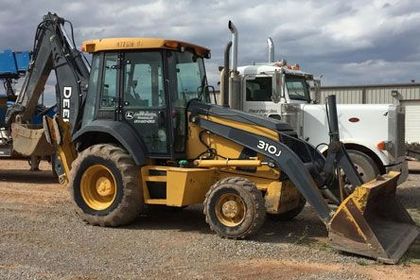Everything About Oil Field Equipment and Pipeline Equipment: Secret Insights and Necessary Details
Oil field equipment and pipeline systems play a pivotal function in the oil and gas market. They are vital for the efficient extraction and transportation of hydrocarbons. Key parts, such as piercing rigs and tank, directly influence operational success. Advancements in technology guarantee to improve safety and effectiveness. Recognizing these aspects is crucial for any person associated with or interested in this complex market, as it sets the phase for much deeper exploration of industry techniques.

Summary of Oil Field Equipment
As the demand for oil continues to expand, recognizing the tools utilized in oil fields ends up being progressively important. Oil field equipment encompasses a vast range of machinery and devices essential for exploration, extraction, and handling. Secret elements include drilling rigs, which are critical for getting to oil reservoirs, and manufacturing tools, such as separators and pumps, that facilitate the extraction procedure. Superior Oilfield Rentals. Furthermore, storage containers play a substantial duty in holding petroleum before transport. Security equipment, including blowout preventers and stress assesses, assures functional security and efficiency. Each tool functions cohesively to enhance production and preserve reliable workflow. Experience with this tools is necessary for specialists in the sector to guarantee effective procedures and adherence to safety standards
Kinds Of Drilling Rigs and Their Applications
Drilling rigs act as the foundation of oil removal procedures, with numerous kinds developed for details geological conditions and operational needs. The most usual kinds consist of rotary drilling rigs, which use a turning drill bit to penetrate the planet, and cord device rigs, recognized for their percussion exploration method. For offshore procedures, jack-up rigs and semi-submersible rigs give stability and assistance in aquatic atmospheres. In addition, directional drilling rigs enable drivers to pierce at angles, reaching down payments that are not up and down accessible. Each gear kind has unique advantages, maximizing performance and safety and security based on the boring atmosphere. Choosing the ideal rig is crucial for making best use of source removal while minimizing environmental impact and functional expenses.

Vital Pipeline Equipment and Their Functions
Pipeline facilities is essential for the transport of oil and gas from extraction sites to refining facilities and end-users. Different essential devices components promote this procedure. Pipelines themselves act as the primary channels, designed to endure high pressure and corrosive materials. Pump terminals are crucial for keeping circulation by improving stress along the pipeline. Shutoffs play an essential function in controlling circulation and separating areas for maintenance. Additionally, installations and ports guarantee secure joints between pipe sections. Monitoring systems, consisting of circulation meters and pressure sensing units, are vital for discovering leaks and optimizing flow rates. Pigging tools is used for upkeep and cleansing, securing pipeline honesty and effectiveness. With each other, these components create the backbone of a reputable pipeline system.
Innovations and Technologies in Oil and Gas Equipment

Safety And Security and Maintenance Practices in the Oil Market
While the oil sector has actually made considerable strides in technology and performance, the relevance of durable safety and upkeep techniques can not be overemphasized. Reliable safety methods are important to protect workers and the atmosphere, reducing the danger of mishaps and spills. Routine examinations and upkeep of tools help recognize potential concerns before they rise, making sure functional integrity. Educating programs for staff members are crucial, emphasizing the importance of safety awareness and emergency action treatments. Furthermore, adherence to sector guidelines and requirements fosters a society of security. Carrying out innovative tracking innovations can better enhance upkeep methods, permitting real-time assessments of tools conditions. Ultimately, prioritizing safety and security and maintenance is essential to the sustainability and success of the oil industry.
Often Asked Questions
What Are the Environmental Effects of Oil Field Equipment?
The environmental impacts of oil field equipment consist of environment destruction, water contamination, and air contamination (Superior rentals squeeze tools). In addition, tools breakdown can lead to spills, negatively impacting wild animals and communities, highlighting the demand for stringent guidelines and tracking
Just How Is Oil Field Equipment Transported to Remote Locations?
Transferring oil field equipment to remote areas frequently here involves specialized lorries, helicopters, or barges. Logistics business coordinate routes, guaranteeing devices gets here securely and effectively, considering surface and accessibility to reduce delays and take full advantage of performance.
What Governing Criteria Govern Oil Field Equipment?
Regulatory requirements governing oil field equipment mostly consist of safety and security, ecological security, and functional efficiency guidelines. Agencies such as OSHA and EPA impose these regulations to guarantee safe methods and reduce eco-friendly influence in oil extraction operations.
What Abilities Are Required to Run Oil Field Machinery?

Just How Do Oil Rates Influence Equipment Demand and Usage?
Oil rates significantly influence tools demand and use. Higher costs commonly cause boosted exploration and manufacturing tasks, driving need for machinery. On the other hand, lower rates might cause minimized operations and reduced need for devices.